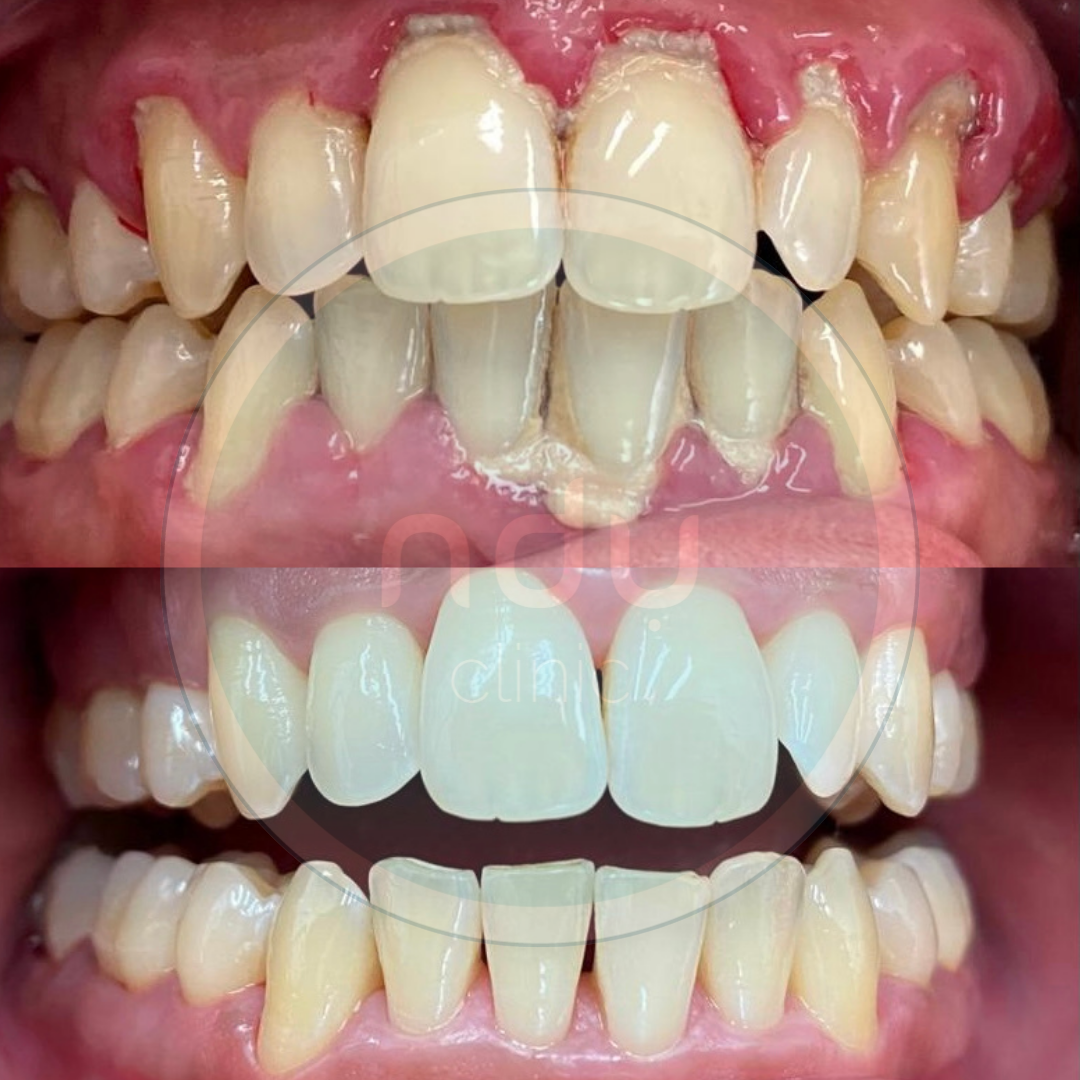Dental Hygiene and Prevention
The treatment provided by our dental hygienist includes:
Scaling which involves use of piezoelectric scaler and hand instruments
Root surface debridement (RSD) with use of fine hand instruments to achieve smoothest root surface possible
Polishing
Periodontal treatment for more advanced periodontal disease with use of laser
Oral hygiene instructions in order to develope and maintain healthy teeth and gums
During your dental hygiene visit, your teeth and gums will be thoroughly examined and irregularities noted.
Many studies have shown that these days more teeth are lost due to gum disease than tooth decay.
Regular visits to the dental hygienist will help improve and prevent periodontal (gum) disease.
Would you like to know a little more about gum disease?
What it is periodontal (gum) disease?
Gum disease describes swelling, soreness or infection of the tissues supporting the teeth. There are two main forms of gum disease:
Gingivitis – inflammation of the gums. This is when the gums around the teeth become very red and swollen and they can bleed during brushing or flossing
Periodontitis – Long-standing gingivitis can turn into periodontitis – when the supporting tissues of the teeth (gums, ligament, & bone) are affected. The more advanced periodontal disease the less bone supporting structure present and teeth becomes loss.
Who suffers from gum disease?
Most of the population suffers from some form of gum disease and it is a major cause of tooth loss in adults. However, the disease develops very slowly in most people and it can be slowed down (by regular visits to the dentist and dental hygienist) to a rate that should allow a person to keep most of his/her teeth for life.
What is a cause of gum disease?
All gum disease is caused by plaque. Plaque is a film of bacteria which forms on the surface of the teeth and gums every day.
Many of the bacteria in plaque are completely harmless, but there are some that have been shown to be the main cause of gum disease. To prevent and treat gum disease, you need to make sure you remove all the plaque from your teeth every day. This is done by good brushing and flossing.
What happens if gum disease is not treated?
Unfortunately, gum disease progresses painlessly on the whole so that you do not notice the damage it is causing.
However, the bacteria are sometimes more active and this makes your gums sore. Over a number of years, the bone supporting the teeth can be lost. If the disease is left untreated for a long time, treatment can become more difficult.
What treatments are needed?
The dental hygienist will clean your teeth thoroughly to remove the calculus (“tarta”) by thoroughly and effectively cleaning all the surfaces of your teeth. This may take a number of sessions depending on the severity of the gum disease. You will also be shown how to remove plaque successfully yourself.
The Hygiene treatment will also be supported with Laser treatment, as shown in studies at the University of Aachen that it reduces bacterial count from the first application.
Our Clinic is part of the studies that are taking place at the leading University in Germany to find out the best treatment plans for perdiontal applications. Not only is the Laser useful in periodontal treatment but also for soft tissue and hard tissue treatment. Studies are showing that the need for antibiotic treatment in severe periodontal cases is significantly reduced.
Before / After

